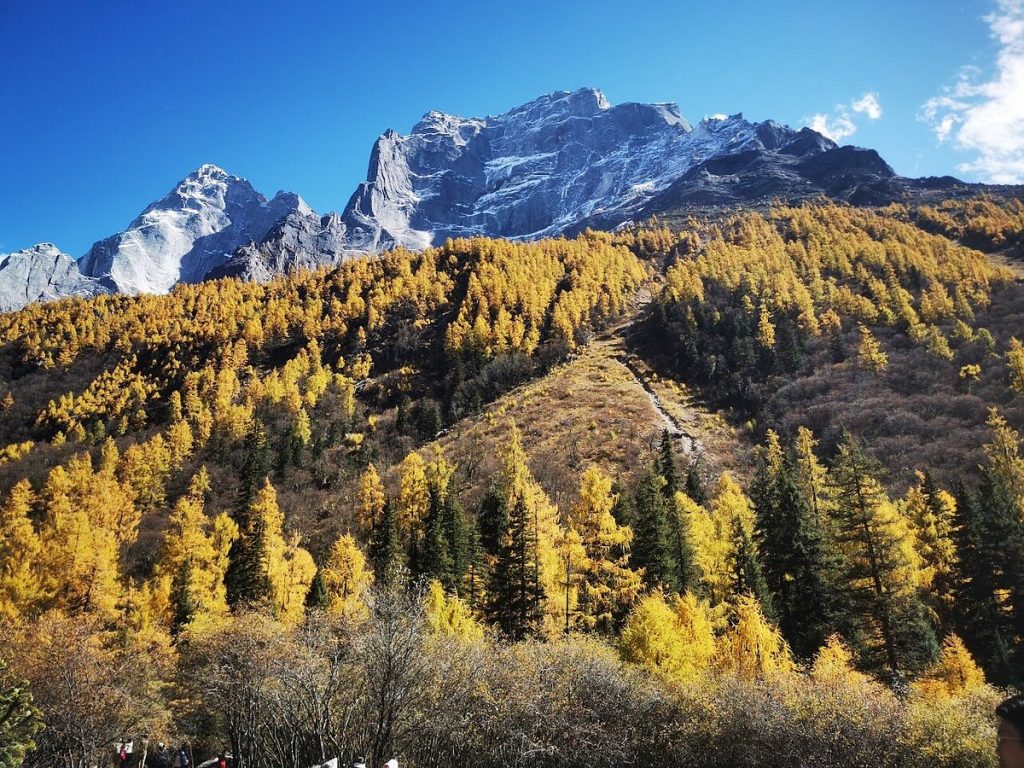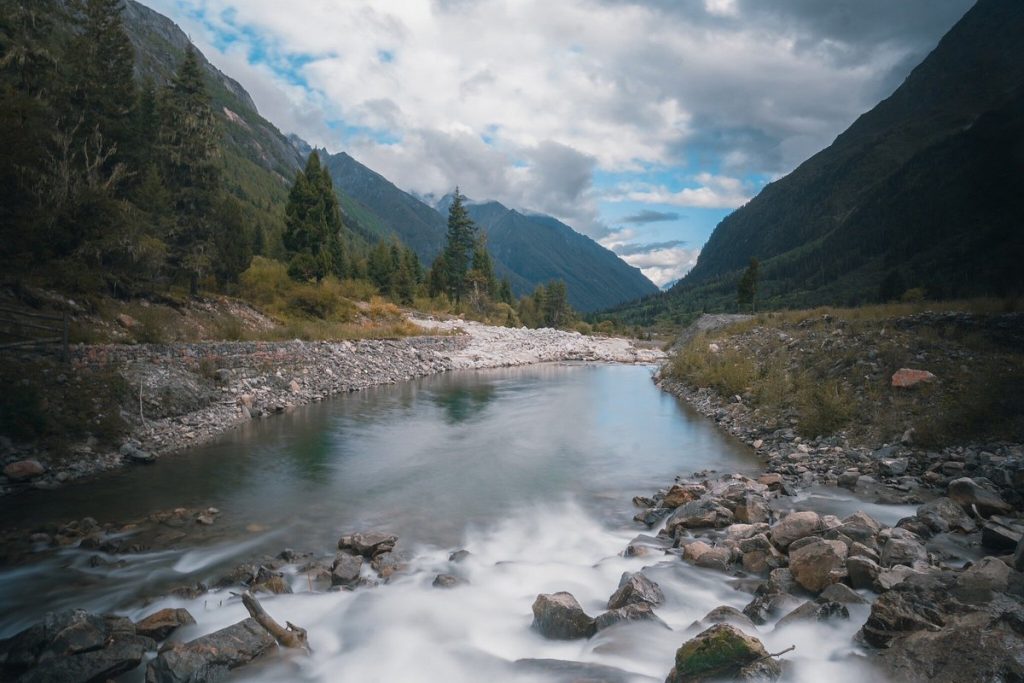About Mount Siguniang
Mount Siguniang, located in the Sichuan Province of China, is a remarkable destination known for its stunning landscapes and challenging peaks. Often referred to as the “Four Sisters Mountain,” this range includes four distinct peaks, each offering unique experiences for trekkers and climbers.
Discovering the Peaks
The highest peak, Yāomèi Fēng, also known as the “Queen of Sichuan’s peaks,” stands at 6,250 meters (20,510 feet). It is the second highest mountain in Sichuan and the easternmost peak over 6,000 meters on Earth. The first successful ascent was made by a Japanese team in 1981. Due to its difficulty, few climbers attempt it, and even fewer succeed.
The other three peaks, Daguniang Feng (5,025 meters), Erguniang Feng (5,276 meters), and Sanguniang Feng (5,355 meters), are popular among mountaineers. Daguniang Feng is suitable for trekking, while Erguniang Feng and Sanguniang Feng require basic climbing skills.
Flora and Fauna
Mount Siguniang is home to diverse flora and fauna. The region supports rare species like the Sichuan takin and the golden snub-nosed monkey. Nature enthusiasts can explore various hiking trails to experience the area’s rich biodiversity.
Best Time to Visit
Spring and autumn are the ideal seasons to visit Mount Siguniang. During these times, the weather is mild, and the views are clear. Summer can be hot and humid, while winter brings extreme cold and snow, making outdoor activities more challenging.
Getting There
The closest major city to Mount Siguniang is Chengdu, which is well-connected to other cities in China and international destinations. From Chengdu, travelers can take a bus or hire a private car to reach Rilong, the gateway town to Mount Siguniang.
Local Transportation
Rilong is small and can be explored on foot. To reach the mountain base or explore surrounding areas, hiring a local guide or renting a car is advisable. The roads can be steep and challenging, so reliable transportation is essential.
Exploring the Valleys
The mountain range is divided into three valleys, each offering distinct attractions.
Shuangqiao Valley
Shuangqiao Valley is the most accessible and popular among visitors. It features well-maintained trails and breathtaking views of snow-capped peaks. The valley is dotted with picturesque waterfalls and dense forests, providing ample photo opportunities.
Changping Valley
For a more challenging hike, Changping Valley offers steep trails and rugged terrain. It is a thrilling adventure for experienced hikers. The highlight is the Changping Icefall, a stunning frozen waterfall that attracts ice climbers globally.
Haizi Valley
Haizi Valley, the least visited, offers serene alpine meadows and tranquil lakes. It is perfect for a peaceful retreat, with opportunities for hiking, picnicking, and enjoying the breathtaking scenery.
Accommodation
Most visitors stay in Siguniangshan Town, located at about 3,200–3,600 meters altitude. It offers a wide range of hotels, restaurants, and shops, and is ideally situated just a few minutes’ walk from Haizi Valley and under 10 minutes’ drive to the Changping Valley tourist center. Some recommended accommodations include:
For a quieter and more scenic atmosphere, Changping Village, located just 1 km away, is a great alternative. It’s especially popular with hikers and nature lovers. Options here include:
Experienced hikers can also choose to camp or stay in mountain huts inside Changping or Haizi Valleys, but this requires permits and usually a local guide. This option is recommended only for those familiar with high-altitude trekking and equipped for cold weather.
Mount Siguniang’s natural beauty and well-organized tourist facilities make it a top destination for both casual travelers and serious hikers.






